
First Orchid of 2021
Brought her in from the cold just after her buds set and she has been in bloom over 3 weeks now.... Cymbidium orchids are another good choice for home gardeners. They are easy to grow and bloom if you don't give them too much sun and too much water. I start a little bloom food in October/November and usually see buds in January. Mine like to grow in all coco husk media tightly packed and I don't repot them until they are bursting at the seams.
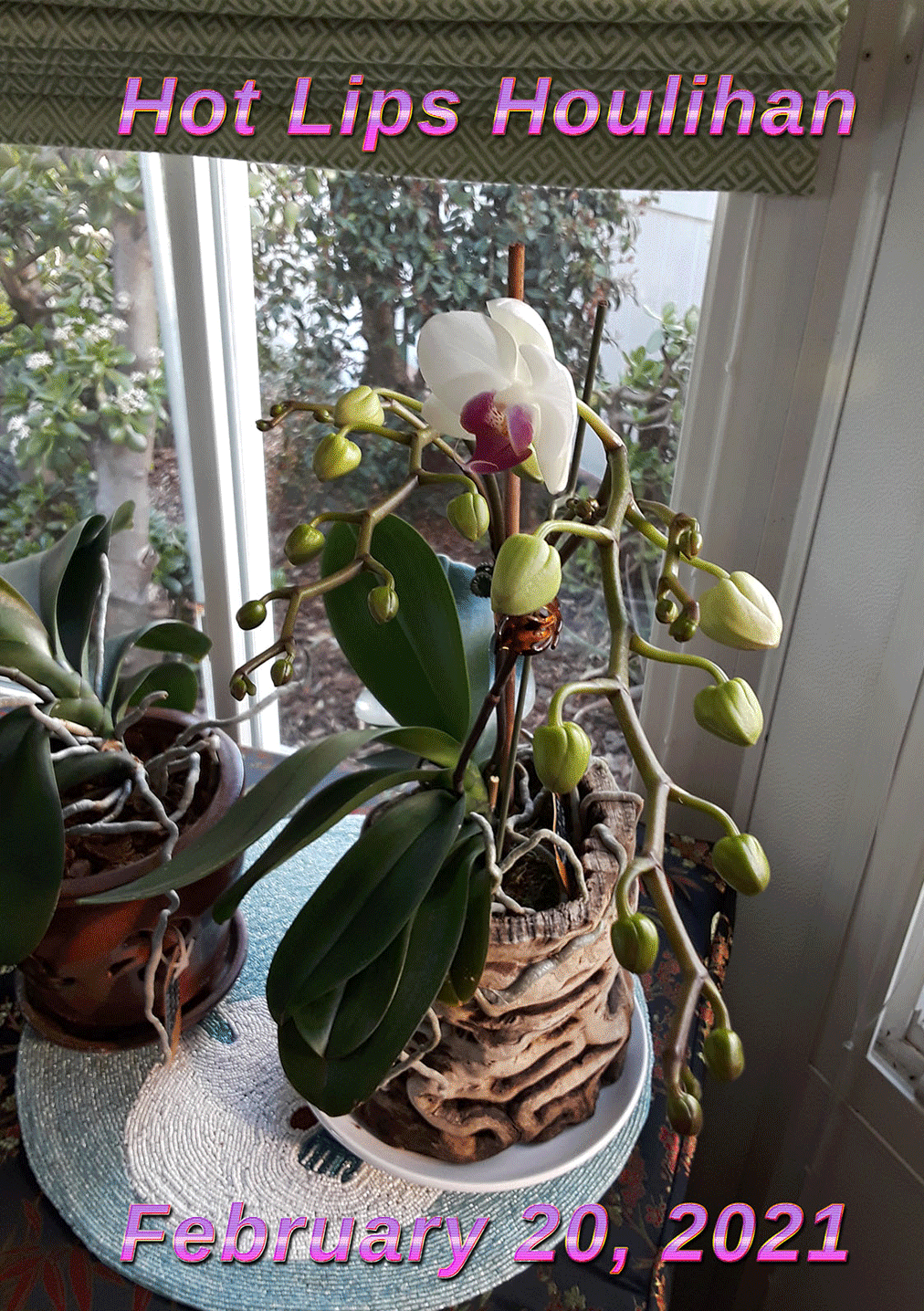
Like her namesake from the 70's sitcom M*A*S*H - Hot Lips is quite Frankly an eager bloomer and once she gets started you can expect a Major event.

"Oxblood".. invokes fond memories of how mad my dad got when I used oxblood shoe polish on my new brown shoes.
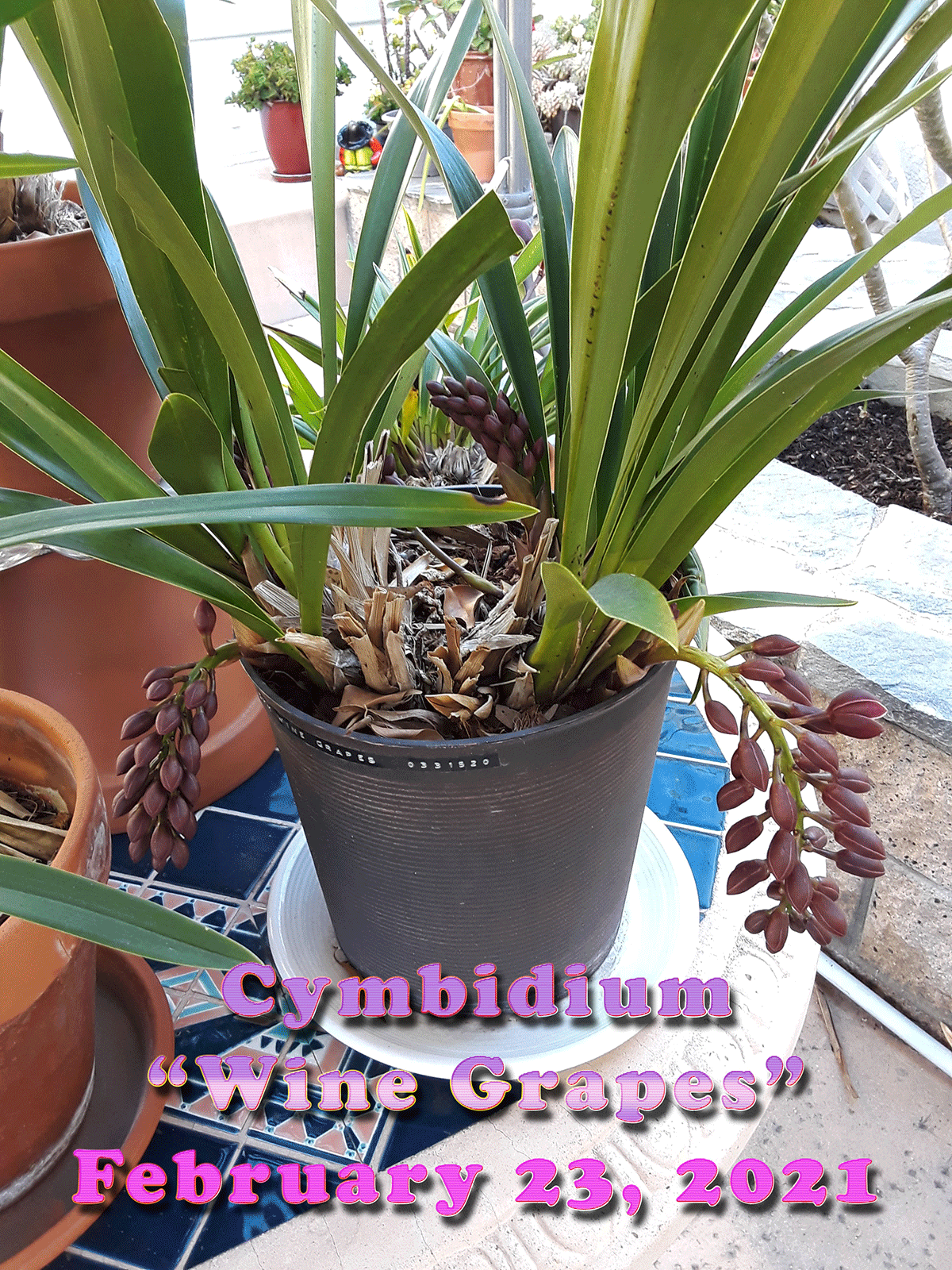
"Wine Grapes" This Cymbidium blooms once a year and her cascading blooms last for months... or until something gives her a vigorous pollination.

"Yellow Tiger" This Brassia orchid blooms 2-3 times each year and its first bloom of 2021 started in March.
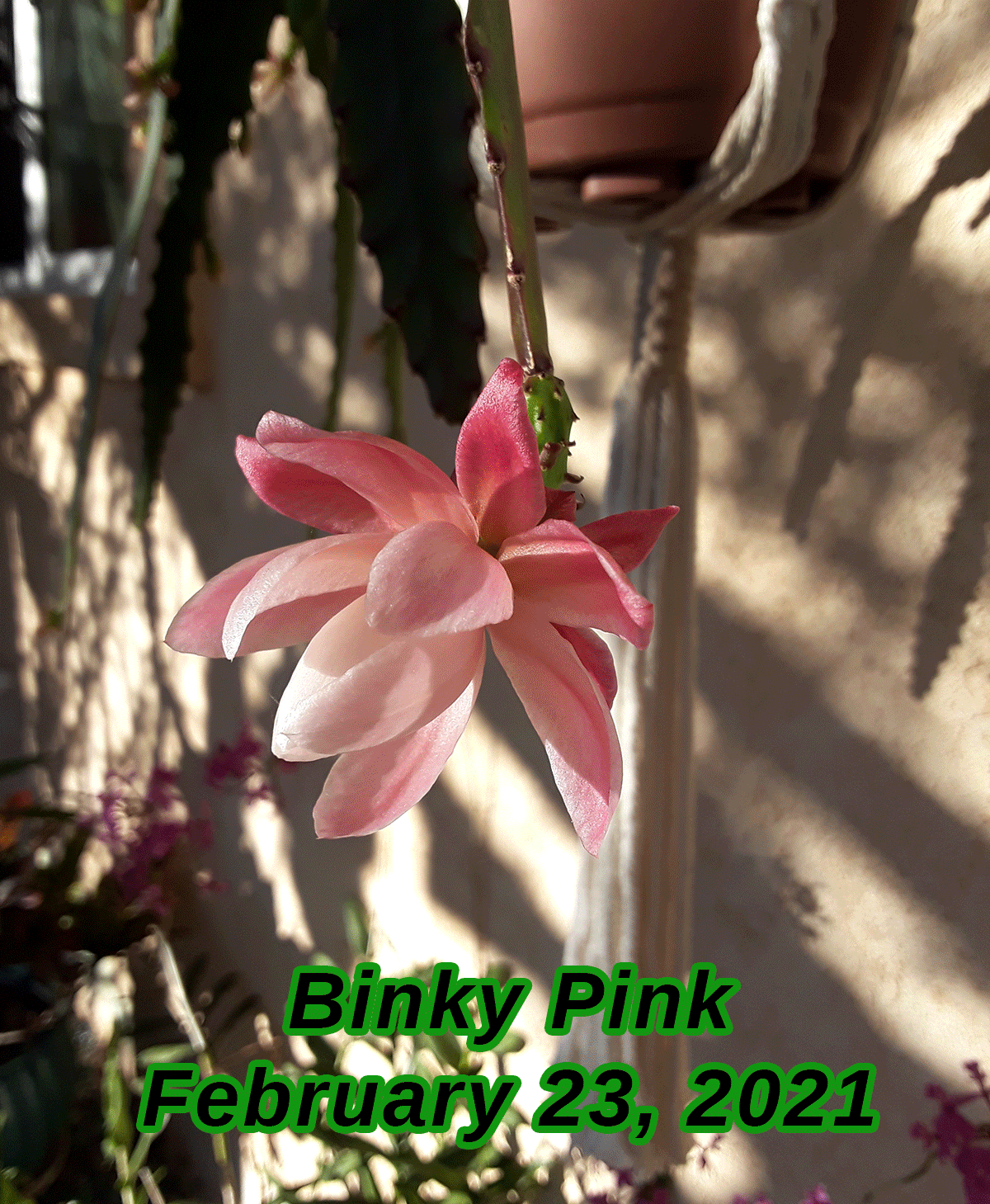
First Epiphyllum of 2021
Once again Binky Pink leads off the Epi season with an early February bloom that is lasting well into March.

Bea's birthday bloom and the first of the season for the big epi's. This egg has no cholesterol and lasts on the vine for several days before it scrambles itself..

From the fictional Tokyo brothel made famous on the old M*A*S*H TV show, this bloom, the Pink Pagoda, is all girl.

Hello Gorgeous - this bloom is the first of many that will surprise us over the next few weeks. This one bloomed in a pot with two other colors, Pink Pagoda and Lemon Meringue Pie.
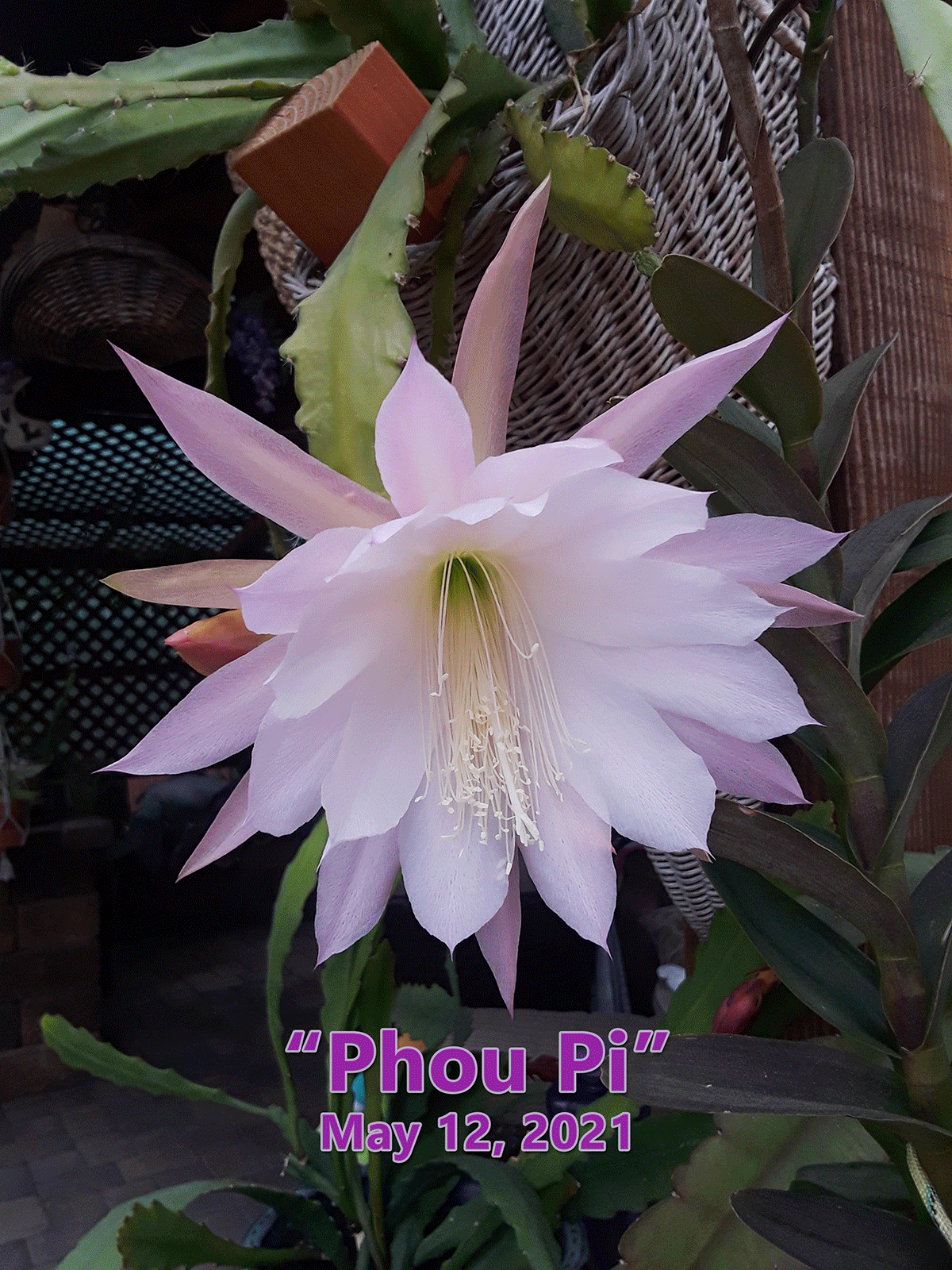
Phou Pi, named after Andrew's mom, stays in bloom for several days longer than most epi's and while she looks delicate she is rather hardy.
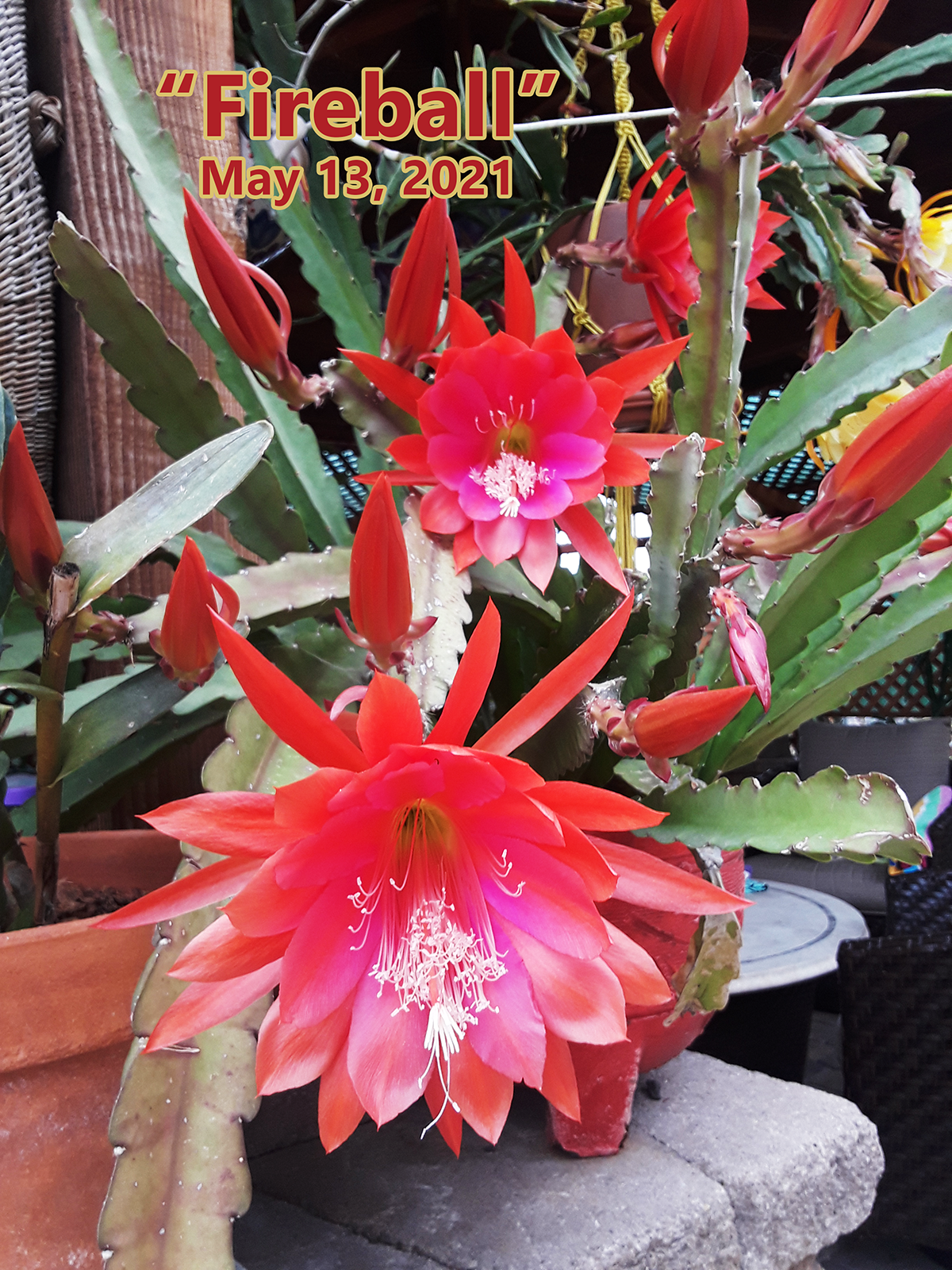
This one pot has 27 blooms warming in the bullpen. A little more red and fiery than Morningstar and the bees just love this one.
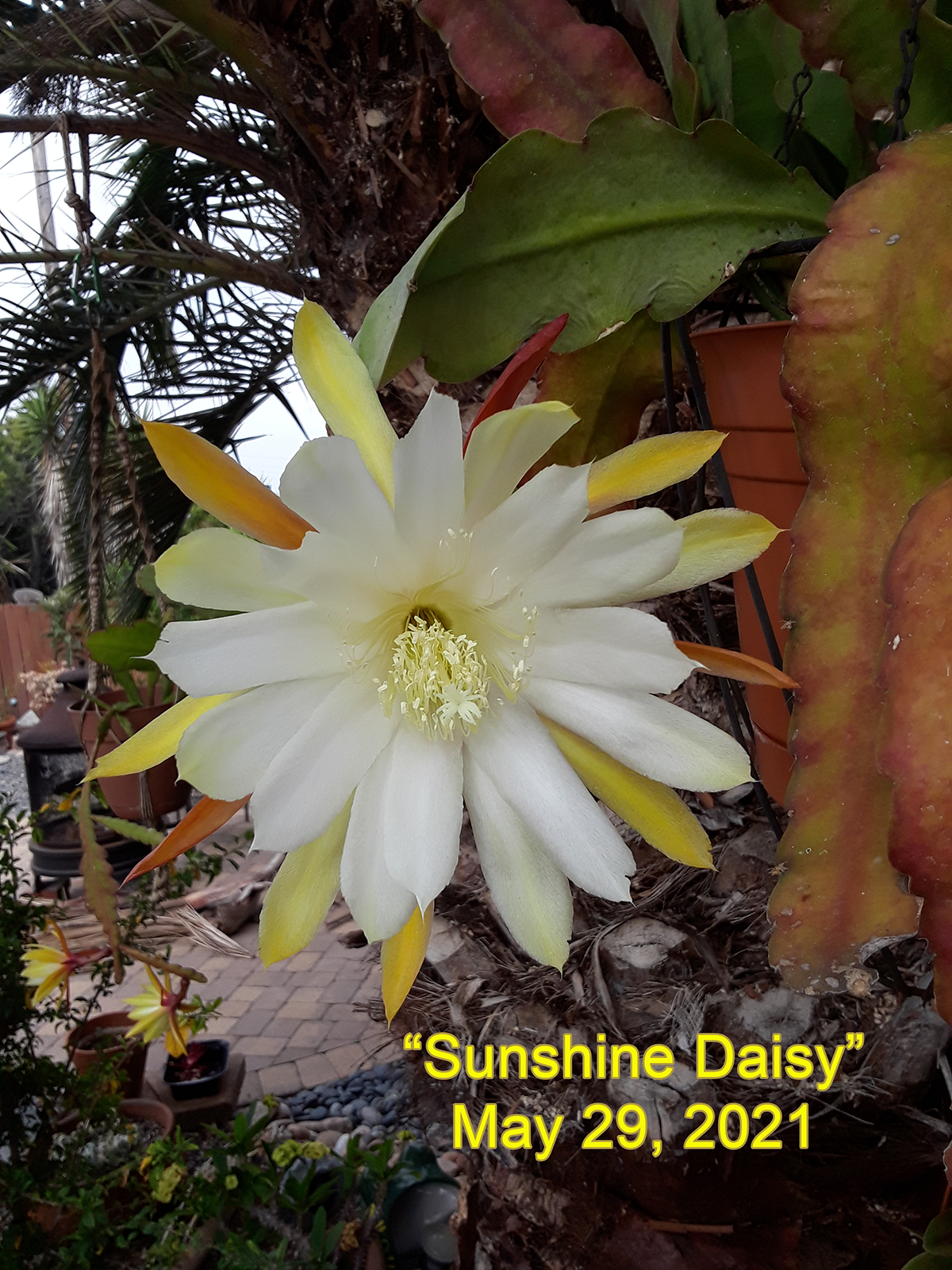
Named after Ron Weasley's first spell in the Harry Potter series... "Sunshine Daisy, Bottom Mellow... Turn this stupid fat rat yellow." Quite a surprise as she popped up in the same pot as 'Phyllis Fickle.'

Thought to be the mother of all epiphyllums, the Queen of the Night may be the source from which all hybrids originate. She blooms only at night, lasts only for hours and smells like Ivory soap.
In A Nut Shell
Epiphyllums are easy to grow and manage when you follow a few basics. Moderation with light, temperature, water and fertilizer are key. Regular inspection and adjusting the basics will keep your epi's growing and blooming for years. Epiphyllum care is much like making dumplings. Get all the right ingredients but don't over mix. Less may be more with these cactus flowers.
Best Outdoors - Bright light - Morning Sun
Epi's are epiphytic cactus, often called Orchid Cactus. They do best in hanging pots and in direct, filtered sun. The filter of a tree works well and where there is no filtering, morning sun is best. Most epi's are not overly fussy but too little light and you will get few if any blooms. Too much sun and leaves get sunburned, weakened and subject to virus and fungus disease. If your epi's are green and firm and growing you are doing the right things.
Rule of Thumb: You can determine the sun impact on your plants by looking at the color. Dark green suggests too little sun and you will likely get few blooms. Pale green to yellowish or even red suggests more sun than the plant requires but if there is no leaf damage... it may be fine. We have a few that grow under trees that get a lot of sun turning yellowish to red and hey bloom wonderfully.
Small Pots - Fast Draining Soil
Being epiphytic plants, the first function of their roots is to hold them against their host. Most epi's do best in small containers where they develop a strong root system. Too large a pot and the plants spend more energy expanding their root systems and less on growing new leaves that will eventually bloom. Epi's that have been in a pot for a long time and no longer seem to grow likely need to be re-potted, but not necessarily in a larger pot... just more room for new roots. We often take them out of their pots, and with a very clean knife, cut off any dead roots (there almost always are some) and just replace the soil with fresh.
Plant Food - Less is More
We were taught the following schedule for epi plant food and it seems to work well.
After blooming, no plant food for for 3 months - just enough water to keep the plants healthy and encourage new growth. Then 1/2 strength grow food every other watering for three months. Then 1/2 strength bloom food every other watering until the first blooms appear (March, early April usually).
We use Orchid Grow food (Urea Free 20-10-20) and Orchid Bloom food (6-30-30)
Rule of Thumb - plants that grow in the ground are designed to tolerate urea nitrogen (from animal sources) - plants that grow in trees (epiphytes) are not. They get their nitrogen from decaying plant material. While this is not carved in stone, we find this rule very beneficial to our epi's.
Water - Water - Water
Epiphyllums generally like to dry out between waterings. They don't need to be always wet but they don't like to be excessively dry. Root rot occurs in the presence of constant wet soil, particularly if water doesn't drain quickly. Here is San Diego our weather varies. When the humidity is high (>60%) we water less and when we get those intrepid Santa Anna events where the humidity drops to 10% or lower, we water more often.
Rule of Thumb: Water in the morning and not at night. You will experience far fewer viral and fungus infections if the leaves are dry before nightfall. This is very true for orchids as well.
Our municipal water is very alkaline with a high pH and epiphytes prefer neutral pH or slightly acidic water as in natural rain water. We store rain water from our rare rainy season and in the summer, we use it and the condensate from our air conditioning system to water our orchids and epi's. We do use the tap water occasionally but mostly to chase away pests and dirt.
Temperature and Humidity
Cactus orchids, epiphyllums, like orchids, do not tolerate frost and freeze. If you leave your plants outside in temperatures below 40 degrees you may see them die. Here in Southern California it gets cold in the winter but never below 40 where we live. I take young cuttings into the house for the winter but mature plants thrive well as long as they are not subject to frost or freeze. In fact, the winter cold is one of the natural bloom stimulants for all kinds of cactus.
Humidity: Epi's prefer moderate humidity (40-50%). Long periods of dry air (humidity <30%) may not impact the epi's directly but it invites a host of bugs like brown scale, aphids and the like. We mist and water more frequently in the mornings when the humidity is low and water less when the humidity is high, >60%.
Taking and Planting Cuttings
Propagate epi's by taking cuttings from healthy leaves. Chose a leaf section that is green, firm and cut it off using a sterile (very clean) knife or scissors. Cuttings should be 6-8 inches long and left to dry for 7-10 days before planting to reduce the risk of viral and fungal infections. Freshly cut cuttings put immediately into potting soil may well rot before they root.
Plant the cuttings 2-3 inches deep in small pots and fast draining potting soil and keep them moist with some drying between watering. New cuttings may take weeks or months to show growth but the mother cutting should remain green and firm. As the cuttings begin to grow new shoots may pop up from the soil or new leaves form on the mother cutting. Over time the mother cutting often gives way to her progeny.
Plants from Seeds
After flowering, epiphyllums often develop fruit that resembles tiny dragon fruit and at maturity, contain seeds in which to propagate. Hybridization occurs when epi's are cross pollinated and allowed to seed. We have no experience with this but there is a host of information online.
Managing Pests
Aphids and scale are pests that like to attack epi's particularly when it is hot and dry. Ants are often the first clue that you have a scale infestation as they feed on the scale honeydew. Regularly inspecting your epi's will alert you to any pests and make it easier to get rid of them. We find that aphids are easy to get rid of with just a firm stream from the hose or better yet a spray bottle. Regular Windex and a soft toothbrush works fine to get rid of aphids and scale if you catch them early on. We have seen a few snails get into our pots and they reek havoc with epi's but not usually a problem with hanging pots.